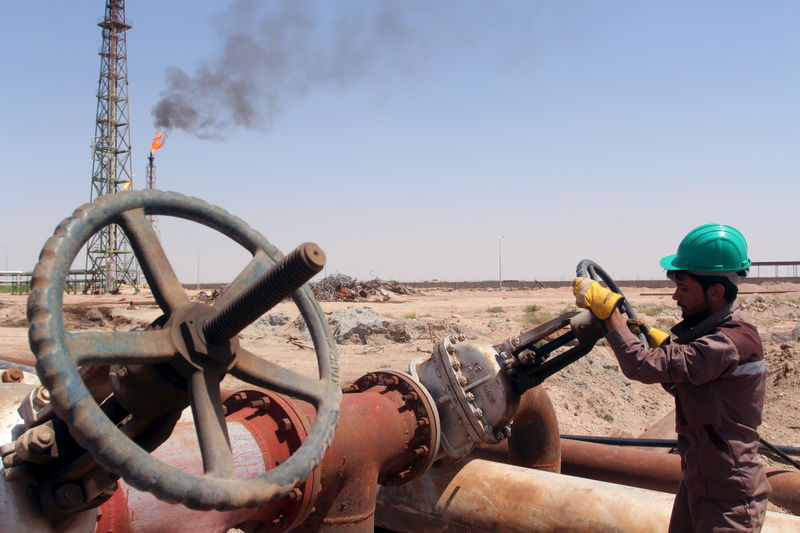Investing.com - U.S. crude oil inventories rose last week, marking its third-consecutive week of stockpile builds and its second-straight surge of more than 7 million barrels.
The Energy Information Administration said in its regular weekly report that inventories grew by 7.03 million barrels in the week to April 5.
That was compared to forecasts for a stockpile draw of 2.29 million barrels, after a gain of 7.24 million barrels in the previous week.
The EIA report also showed, however, that gasoline inventories plunged by 7.71 million barrels, compared to expectations for a draw of 2.01 million barrels. Distillate stockpiles dropped by just 0.12 million barrels, compared to forecasts for a decline of 1.3 million.
U.S. crude prices held onto gains after the data release, rising 0.6% at $64.38 a barrel by 10:34 AM ET (14:34 GMT), compared to $64.39 prior to the publication.
London-traded Brent crude futures traded up 0.6% to $71.03 a barrel, unchanged from ahead of the release.
Investing.com senior commodity analyst Barani Krishnan attributed the lack of price movement to the near like-for-like draw in gasoline when compared to the build in crude oil.
“Not surprisingly, the flat price of crude is up as people anticipate the gasoline consumption to continue in the run-up to (the U.S. summer driving season),” he explained.
Oil prices were higher earlier on Wednesday as a political upheaval in Libya increased concern over tightening supply. Forces loyal to renegade general Khalifa Haftar continued their advance on the capital, striking Tripoli's only working airport and ignoring international calls for a truce. Haftar's forces are already in control of oil fields that produce half or more of Libya's total output of about 1.1 million barrels of crude a day, a disruption that would only add to dwindling supply caused by OPEC-led production cuts or U.S. sanctions on Iran and Venezuela.
OPEC’s monthly report, released earlier Wednesday, showed that the cartel’s output fell by 534,000 barrels per day in March. At just over 30 million barrels, the group’s production has dropped to a four-year low. The cartel’s efforts to reduce production in 2019 are a large part of the explanation behind the more-than-40% rally in U.S. crude prices so far this year.
Russian President Vladimir Putin said late Tuesday that the decision on whether or not to extend joint oil-production cuts with OPEC beyond the current June end date would likely be made at the meeting that month.
Saudi Energy Minister Khalid al-Falih also said on Monday that it was premature to establish whether a consensus existed among a global oil-producers' alliance to extend supply cuts, but suggested that a decision made be made at a lower-key technical grouping in May.
